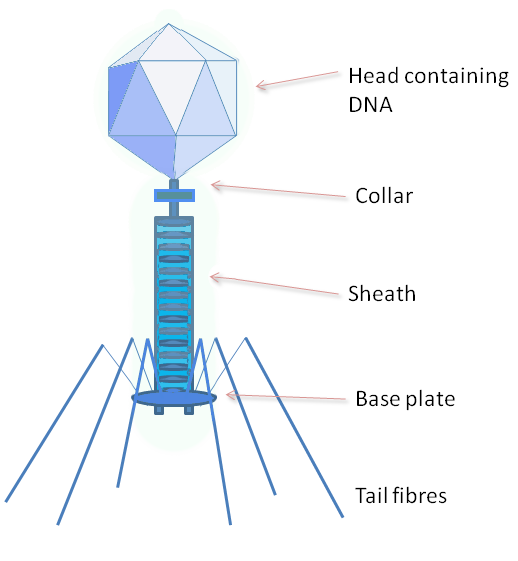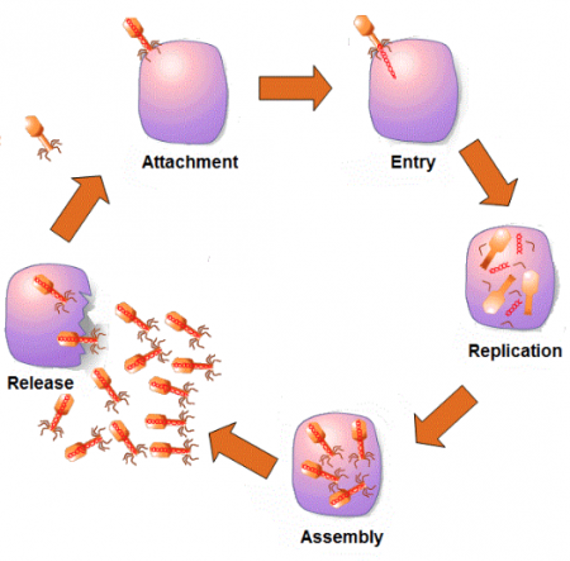What can be said about a thing that is alive by some definitions of lice, but isn’t alive by other definitions? Like other types of cells, viruses are made up of proteins. And like other cells, viruses are able to reproduce; generally, something that reproduces itself is considered to be alive. But viruses aren’t independently living, breathing, reproducing organisms. Unlike any other type of cells, viruses can only reproduce inside a host organism’s cells. Without a host cell inside an independently living organism, they do nothing.
Most cells, from the single-celled organisms such as bacteria to the individual cells that make up a tree, a whale, or an emu, are large on a microscopic scale. In fact, they can be seen under a high school biology class microscope. Viral “cells” are much smaller and require an electron microscope to be seen. To put the scope of this size difference into scale, consider that one host cell can contain millions of viral cells. When the virus has reproduced to the carrying capacity of the host cell, the viral cells burst out of the host cell, killing it; they then go in search of new cells to infect, and start the reproductive process over again.


Unlike bacteria, there are no good viruses. Viral cells invade a host cell by penetrating the cell wall. They then deposit their genetic material into the host cell, where they use the host’s genetic material to replicate. When as many new viral cells have replicated as the host cell is capable of accommodating, the viral cells burst the wall of the host cell and go out in search of new host cells to continue the process.
Living organisms have basic genetic material, which they ordinarily receive from their parents. Here, again viruses are different: They cheat and use genetic material from the host cell to reproduce their own genetic information, repeatedly. This method of replication enables a single viral cell to enter the host cell and create millions of new viruses.
Unfortunately, viruses aren’t affected – not even a little bit – by antibiotics. Once a viral infection has begun, the animal’s immune system must combat the viral organism with antibodies, or the animal will die. Antibodies are like little warriors that are created in the bodies of all animals to combat alien proteins.
No drugs will cure a viral infection, but that doesn’t mean drug therapy is never called for when dealing with a virus; drugs may be given to help alleviate certain symptoms (aspirin to reduce the fever, for example) or antibiotics may be called for to stave off secondary bacterial infections. Bovine viral diarrhoea (BVD) is a good example of a viral disease that is highly contagious and causes high mortality levels (large numbers of exposed animals will die). But the virus itself isn’t usually the cause of death, secondary bacterial pneumonia is, so as soon as BVD is diagnosed the animals are started on antibiotic therapy.
Viruses may not succumb to antibiotics, but many of the common livestock viruses can be prevented from causing illness through the use of vaccinations. Basically, what a vaccine does is teach the body to recognize the protein sequence of a given virus. After the body’s immune system has recognized the virus as a foreign invader, it will quickly recognize it again. This preprogramming of the immune system allows antibodies to be instantly deployed when the virus first shows up, cutting down the immune system’s response time to a point where the invading virus doesn’t have much of a chance to begin reproducing.
- Viruses are the smallest of all microbes.
- They must live inside cells in order to survive and breed.
- Viruses cause about 60 % of disease outbreaks in animals and humans.
- Examples of diseases in animals caused by viruses are rabies, Newcastle disease and three-day Stiff sickness.
- It is difficult to treat diseases caused by viruses because the viruses live inside animal cells. Therefore, any medicine that can kill the viruses will also harm the animals in which the viruses are present.
Click on the link/s below to open the resources.
Click here to view a video that explains how to eradicate cattle plaques.